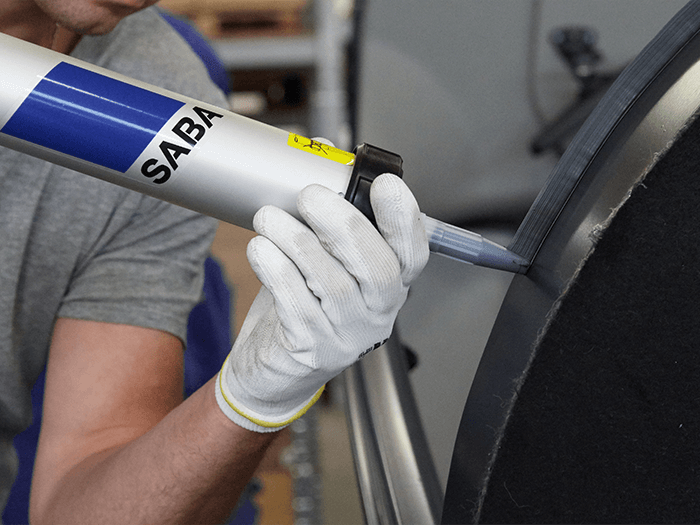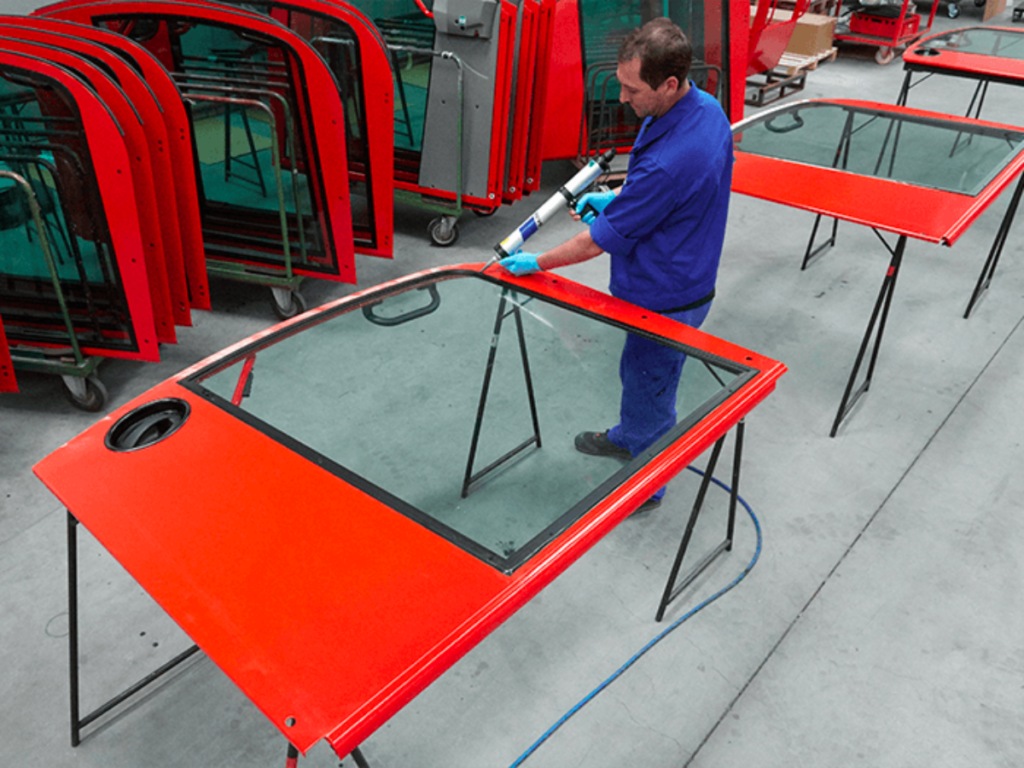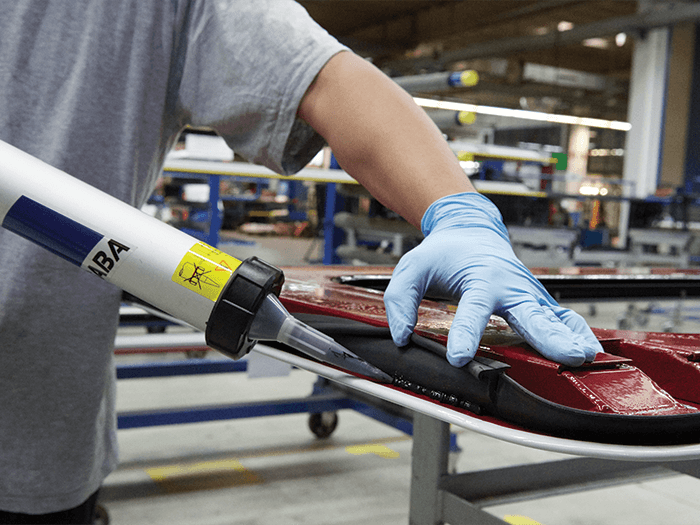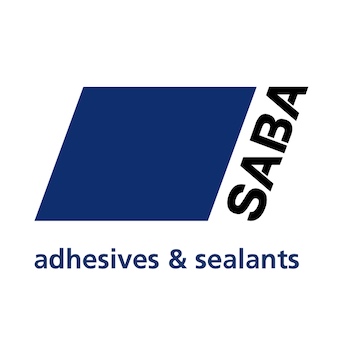Elastic bonding is only one possible method for bonding materials.
Another method is to create a mechanical connection using rivets, bolts or welding, for example. The technique that is most suitable depends on many factors, including the production process, among other things. The use of elastic adhesives is a trend in the transportation industry and is often preferred. The reason for this is that elastic bonds offer significant advantages in comparison to mechanical connections.
Elastic MS Polymer-Based Bonds

In the transportation industry, MS polymer adhesives are used to create various elastic bonds and seals. Examples include bonding and sealing cabins, windows, side panels, interior fit-ups and sandwich panels in trucks, buses and railway cars.
Our Sabatack products are elastic adhesives and sealants based on MS polymer technology. MS polymer-based adhesives create a strong bond combined with a high degree of elasticity, which to a great extent absorbs vibrations and movements, thus providing for a long service life.
The Benefits of Elastic Bonding
Elastic bonding and sealing offer many advantages, both during the production process and in the end product.
Freedom of Design
Due to the greater freedom of choice of materials and the invisible bonding, there are many possibilities in terms of the vehicle’s outer appearance. Elastic MS polymer adhesives are easy to paint over and provide for a smooth surface in comparison to nuts and bolts.
A range of materials can be invisibly bonded without any screw heads showing. In addition, the bonding does not damage the materials as is the case when bolts are used, for example, which requires holes to be drilled.
Different Materials
Elastic MS polymer adhesives adhere to virtually any surface and can bond multi-materials, which results in a large freedom of choice of materials. This in turn makes it possible to make us of lighter materials in developing vehicles.
New materials, that cannot or barely be welded, such as plastics, composites and MonoPan® panels can also be bonded. This contributes to reducing the vehicle’s weight, which saves fuel or makes it possible to transport more passengers or heavier loads. This saves costs and is better for the environment!
Durable
Elastic bonds can be used in a wide range of applications. In contrast to mechanical connections, they durably absorb thermal expansion differences. In addition, elastic bonds limit the risk of leaking and are corrosion-resistant. This substantially increases a vehicle’s service life.
Fast and Easy
Bonding is fast and easy. The vehicle is bonded, as well as sealed, in a single step. When the roof is mechanically attached using bolts, the roof will still need to be sealed to prevent leaks. Bonding the roof creates a seal at the same time, immediately making it watertight.
Uniform Distribution of Stress
Mechanical connections involve peak stresses. An elastic adhesive bond provides for a more uniform distribution of stresses in comparison to a mechanical connection.
Sound Insulating
An elastic bond enables shocks and vibrations to be absorbed. This attenuates noise and vibrations, which contributes to pleasant and quiet driving comfort.
SABA Elastic Adhesives for the Transportation Industry

Our Sabatack® adhesives provide elastic bonds that are well suited for use by the transportation industry. The products in this product range guarantee blister-free curing, regardless of external conditions. The products are UV stable as a result of which the seals retain their color and do not crack, which provides for a good appearance, and a highly durable and reliable seal.
The Mechanical Connection Option
The transportation industry often prefers elastic bonds over mechanical fasteners. Yet, in some instances it is better to opt for mechanical fasteners. For example when the vehicle’s production process involves extremely high temperatures. The use of adhesives is often limited when higher temperatures are involved. Yet, elastic bonds combined with a powder coating process still continue to be an option.

When there is no time for curing the adhesive, a mechanical or hybrid bond may also be preferred. Adhesives require time for curing and building up their strength as a result of which the bonded materials temporarily need to be fixated. Furthermore, the bonding process is irreversible. After the adhesive has cured, the materials cannot easily be disassembled, nor can they be easily disassembled in the case of welding, while disassembly is possible when bolts are used.
From Mechanical to Elastic
Yet the drawbacks associated with elastic bonding do not outweigh its benefits and elastic bonding is generally preferred in the transportation industry. If you are interested in finding out if elastic adhesives and sealants can replace conventional fastening methods such as bolting or welding in your production process, our specialists are happy to share their ideas with you. With the right custom advice it is possible to determine whether elastic bonding can be used to advantage in your production process as well. Contact us without obligation to discover the possibilities!
This article was originally published by SABA.


